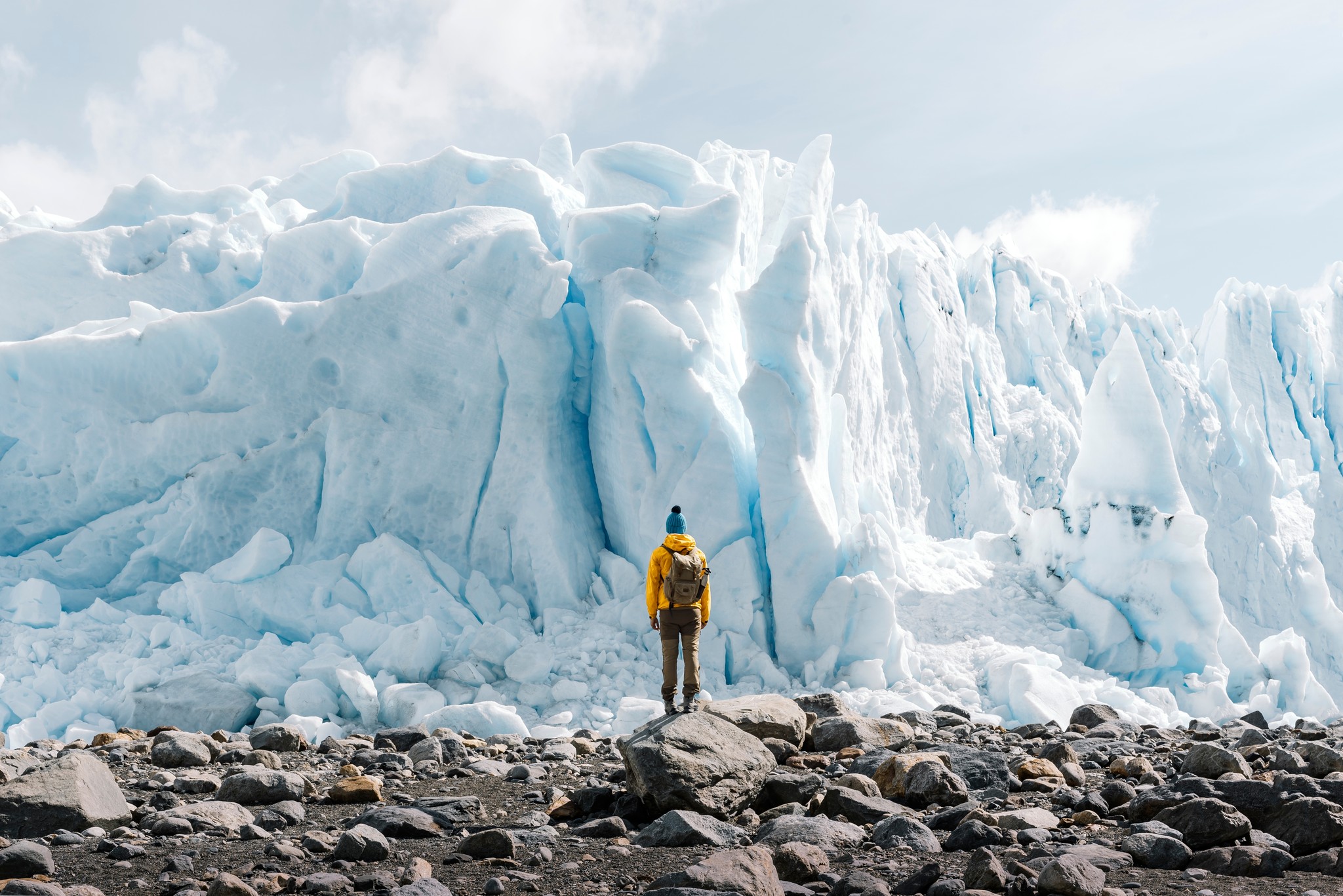Find epic landscapes, challenging terrain, and — best of all — blissfully quiet trails on these six long-distance hiking routes.
While the Dolomites’ Alta Via routes dazzle with their limestone peaks and the Camino de Santiago continues to draw pilgrims by the thousands, Europe harbors countless lesser-known long-distance trails that offer just as much — if not more — adventure without the crowds. These paths weave through breathtaking landscapes, providing a true sense of solitude.
If you’re already dreaming of your next big hiking adventure, consider one of these six spectacular thru-hikes.

Karl Paul Baldacchino/Unsplash
Lofoten Islands Traverse, Norway
Why it's a top pick: The Lofoten archipelago delivers an otherworldly hiking experience where jagged mountains plunge directly into the sea — this unofficial traverse stretches from the village of Å at the southern tip to Svolvær in the northeast. Totaling in at approximately 160km, the journey offers opportunities to witness the northern lights as early as late August, with convenient overnight stops in traditional rorbuer (fishing cabins) along the way.
Why it's still under the radar: The archipelago’s remote location and limited infrastructure have kept this route the domain of experienced hikers. While most visitors stick to day hikes around villages such as Reine, committing to the whole traverse rewards with a much deeper connection to the landscape.
Unmissable highlight: The Reinebringen ridge hike provides the archipelago's most iconic panorama — a perfect synthesis of mountains, sea, and the colorful fishing villages that define Lofoten's character.
Recommended duration: 7–10 days
Getting there: Fly to Bodø from Bergen or Oslo (1.5–2hr), then catch a ferry to Moskenes (3.5hr) to begin your adventure from neighboring Å. Upon reaching Svolvær, fly back to Bergen or Oslo via Bødo, or continue your journey north in search of more adventures above the Arctic Circle.

Beboy/Shutterstock
Corsica's Mare e Monti, France
Why it's a top pick: Compared to some of Corsica's famously difficult trails, the Mare e Monti is approachable yet still challenging. This 120km route runs from Calenzana in the north to Cargèse in the south along Corsica's western edge, alternating between mountain terrain and stunning Mediterranean coastline.
Why it's still under the radar: Overshadowed by its more extreme sibling (the GR20), the Mare e Monti remains relatively quiet even in peak season (Jul–Aug). French hikers know it well, but international awareness remains limited.
Unmissable highlight: The stretch between Girolata and Porto offers the perfect marriage of mountains and sea — a steep climb through aromatic shrubland rewards hikers with panoramic views of the Gulf of Girolata's sapphire waters and the distinctive Capo Rosso peninsula jutting into the Mediterranean.
Recommended duration: 10–12 days
Getting there: From Paris, take an overnight train to Nice or Marseille (7–8hr) followed by a ferry to Ajaccio (5–7hr). From Ajaccio, local buses connect to both Cargèse and Calenzana. Alternatively, regular flights from the mainland will bring you close to the route’s start and end points via airports in Ajaccio and Calvi.

Hamed Alayoub/Unsplash
The Wicklow Way, Ireland
Why it's a top pick: Ireland's oldest waymarked trail delivers a quintessentially Irish experience of gentle mountains, glassy lakes, and verdant valleys just a stone's throw from Dublin. This 129km route traverses the Wicklow Mountains National Park, offering a perfect blend of wilderness and cultural heritage, from the monastic ruins at Glendalough to the historic Powerscourt Estate.
Why it's still under the radar: While Ireland attracts millions of tourists, most focus on driving the Wild Atlantic Way or visiting well-known cities. The country's hiking trails remain surprisingly quiet, with international visitors rarely venturing beyond day walks to the most famous viewpoints.
Unmissable highlight: The section through Glendalough Valley combines magnificent scenery with Ireland's most important early-Christian monastic settlement. Prior to reaching the valley, you’ll have the option to hike up Djouce Mountain — tackle this climb for panoramic views across the Irish Sea that can stretch to Wales on clear days.
Recommended duration: 7–10 days
Getting there: The trail begins in Marlay Park on Dublin's southern edge (accessible by city bus) and ends in Clonegal, County Carlow. From Clonegal, hop across to neighboring Kildavin to catch a local bus to Carlow city (1hr), then take a train back to Dublin (1hr).

Unai Huizi/Shutterstock
The Peaks of the Balkans Trail, Albania, Kosovo, and Montenegro
Why it's a top pick: This 192km cross-border trail traverses the rugged Accursed Mountains (Prokletije) through three countries with a complex history. The route passes shepherd huts, high-alpine lakes, and remote villages where meals traditionally end with a glass of raki (local brandy). Late summer (Jul–Aug) and early autumn (Sep–Oct) offer perfect hiking conditions with stable weather and blooming alpine meadows.
Why it's still under the radar: Despite excellent waymarking, this multi-country route involves complex logistics, meaning many hikers stick to more straightforward, single-country destinations.
Unmissable highlight: The dramatic silhouette of Trekufiri mountain marks the point where Albania, Kosovo, and Montenegro meet — hiking west to east, you can reach it via Theth, Albania.
Recommended duration: 10–12 days
Getting there: Fly to Podgorica (Montenegro), Prishtina (Kosovo), or Tirana (Albania), then use local transport to reach trailheads. The most common starting points on this circular route are Theth or Valbona in Albania. Cross-border permits are required — arrange these in advance through the official Peaks of the Balkans website.

Unai Huizi/Shutterstock
The Slovenian Mountain Trail, Slovenia
Why it's a top pick: This is Slovenia's premier long-distance route, traversing the country's alpine regions, karst plateaus, and wine country across approximately 600km. Established in 1953, it's one of Europe's oldest long-distance trails, connecting more than 50 mountain huts that provide comfortable accommodation without requiring a tent.
Why it's still under the radar: Overshadowed by the Dolomites and Alps, Slovenia's mountains remain surprisingly uncrowded despite their accessibility and beauty. Most international visitors focus on Lake Bled and Ljubljana, missing the country's spectacular mountain backbone.
Unmissable highlight: The crystal-clear waters of the Soča Valley offer some of Europe's most stunning alpine-river scenery, with impossibly turquoise waters cutting through limestone gorges.
Recommended duration: 28–30 days for the full route, or 7–10 days if focusing on sections in the Julian Alps.
Getting there: Slovenia's central European location makes it easy to reach by rail — reach the trail's northern terminus in Maribor by direct train from Vienna (3hr) or Ljubljana (2hr). Alternatively, access the southern end of the trail (in Ankaran) by bus from Trieste (Italy, 1hr).

Andrii Lutsyk/Shutterstock
Fisherman’s Trail, Portugal
Why it's a top pick: Spanning Portugal’s southwest coast, the dramatic Fishermen's Trail winds alongside windswept beaches and rugged cliffs from Saõ Torpes to Lagos, offering abundant wildlife and ocean views across the 230km route. Early autumn (Sep–Oct) provides perfect temperatures after the scorching summer (Jun–Aug) has passed.
Why it's still under the radar: Portugal's hiking scene is overshadowed by Spain's popularity, and most casual visitors concentrate on the Algarve's resort towns rather than its wild western coastline. The trail's relative newness (established in 2013) means it hasn't yet gained the international recognition of older European routes.
Unmissable highlight: The stretch between Almograve and Zambujeira do Mar offers soaring cliffs and pristine beaches accessible only on foot, plus the Cabo Sardão lighthouse, where storks nest on sea stacks in a unique adaptation not seen anywhere else in the world.
Recommended duration: 11–13 days
Getting there: From Lisbon, take a direct bus to Sines (2.5hr), then take a 10-minute taxi or walk for an hour to the start of the Fisherman’s Trail in Saō Torpes. Take a train from the end of the route, in Lagos, to Lisbon (3.5hr).

BublikHaus/Shutterstock
The call of trails less traveled
These six trails show that some of Europe’s best adventures start where the crowds end. Even better, most can be reached by train, bus, or ferry — making it easier to take on your next big hiking challenge with a lighter carbon footprint.
Itching to hit the trails? Find more inspiration and start planning your itinerary in the Polarsteps app! |
|---|
Cover image: Jason Ji/Unsplash



